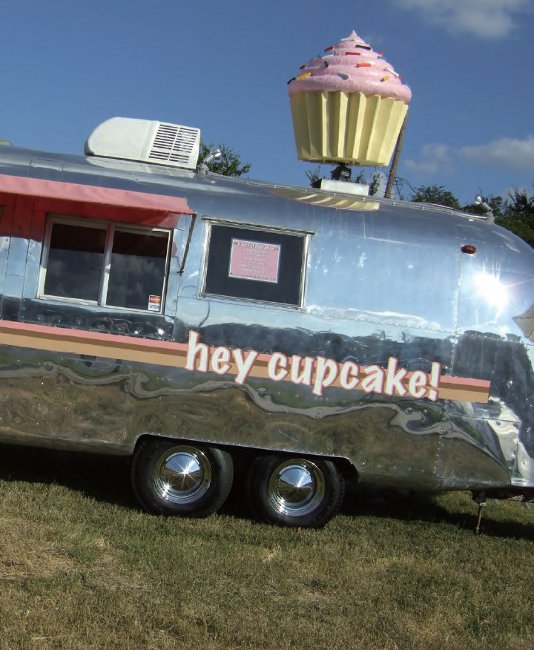
CHAPTER 3
Cupcakes,
COFFEE &
COCKTAILS
Before we start our lesson on sugar and other stimulants, let’s get one thing straight: You are sweet enough. You are sharp enough. Your natural, holy state is more than enough. You just think you need that extra boost. But your body knows exactly how to create it naturally. Keep it clean and lean. Dump the crack!
The real you knows exactly what I mean. In your original state you ooze magic honey. Unicorns want to lick you. Cupcakes and vodka just won’t do. They distort your connection to your base energy. A bump, hit, sip, or snack will definitely make you soar for a hot mess of a minute. But like Icarus flying so high, the race to the sun will burn your wings and drop you on your fat, sugary ass!
Excess sugar (especially the devilish white stuff) robs your bod of minerals, lowers your precious pH, rots your teeth, wigs out your pancreas, feeds candida, fires up inflammation, osteoporosis, diabetes, and cancer, stresses your nervous system and adrenals, and screws with normal hormone function. It also makes you feel crappy after the initial jolt subsides. Sugar taxes your immune system and is highly addictive. Are some sugars better than others? Heck yeah, and you’ll learn the best to choose. But in all cases moderation is key. Sweets are a treat, not an everyday event.
Look, I know firsthand how hard it is to heal addictions. I come from a scarf-and-barf, drinktoo-much history. Date night with myself was a debaucherous romp into coma-ville. I’d buy a bunch of cookies and wine, pop the top button of my jeans, and chow down. Occasionally my higher self would guide me to the trash can before I finished every last crumb. An hour later my lower self would bark orders to pick through the trash and retrieve the delicious drugs like a back-alley junkie.
Elegant people don’t dig through the trash. The chic and stylish don’t attack their doughnuts with Windex. Yes, I admit it. The only way to keep my paws off the contraband was to blast it with Windex. Clearly, I was out of control.
Sugar taxes your immune system and is highly addictive.
SUGAR:
THE LEGAL DRUG
Some of the most dangerous drugs are legal. And I’m not talking about the celebrity-killing pills; I’m talking about the narco-sweeteners that have overtaken the aisles of your grocery stores. Corporate yahoos do their best to greenwash and brainwash, but even the American Heart Association (AHA) is getting on board and imploring people to drastically reduce the amount of sugar they consume. In an article published in 2009 in the major medical journal Circulation, AHA researchers recommended that women limit their sugar intake to no more than 100 calories a day (about 6 teaspoons). For men, a limit of 150 calories per day (about 9 teaspoons) is suggested. That’s way below the average of 355 calories (22 teaspoons) from sugar the average American consumes each day.
Still, even the low amount the AHA recommends is too much, in my opinion. Plus, do you know how hard it is to limit sugar when it’s hidden in everything? You know that a 12-ounce can of cola has sugar in it—that’s no secret (the equivalent of 10 teaspoons of sugar in the form of high-fructose corn syrup, or HFCS, in fact). Okay, but did you also know that HFCS is found in, well, many if not most packaged foods, including brands of applesauce, sushi, bread crumbs, baked beans, cough syrup, canned soups, and hundreds of other packaged products that have no real reason to include the sweet stuff? The US Department of Agriculture has estimated that we eat 79 pounds of corn sweetener per year. Not surprisingly, on average, a typical American consumes 150 pounds of sugar per year—and we don’t even know it!
Manufacturers know that people like sugar, and they also know it is addictive. They play on the fact that sugar makes us feel better—temporarily—and that it’s a comfort food. When you were a kid, were you ever bribed with cookies or candy? “If you’re good and do such-and-such, you can have a tasty reward.” Perhaps your BFF got dumped and desperately needed a shoulder to cry on. A perfect time for a “my condolences” pound cake! Or maybe, like me, you savored pound cake at funerals. Sugar is a delicious salve, and what used to be reserved for special occasions is now a 24/7 addiction.
Sugar makes us feel better for real reasons. It stimulates the release of dopamine (mood lube) in the brain. Naturally, when something makes us feel better, we crave more of it. It’s a well-known fact that the cravings, withdrawal, and relapse symptoms of sugar addicts are similar to those of cocaine and heroin abusers. Their brains are actually wired in a similar way; yet another incentive for rethinking the sweet stuff bribery strategy. How about buying yourself a nice moisturizer when you’re feeling low; or taking your kid to the movies or having a tickle fest, instead of indulging in candy when they’ve had a rough week at school?
Now let’s talk about my favorite organ, the liver. Excess sugar is stored in the liver as glycogen. Your liver is the cabinet and the glycogen is a stash of energy that your body can raid when it needs a boost between meals, during exercise, overnight, or while fasting. Like all storage spaces, however, there’s only so much room. Someone who consistently overeats sugar and carbs will fill up all the storage space in the liver.
Once your liver is crammed full of glycogen, excess glucose is converted into fatty acids (triglycerides). It then enters the bloodstream and gets stored in your tissues. The good news: You don’t have to rent a tire when tubing down the creek. The bad news: The tire permanently dangles around your middle. The really bad news: People who store more fat around their abdominal area are at higher risk for heart disease and diabetes. Are you picking up what I’m laying down? Too much sugar creates an unhealthy domino effect.
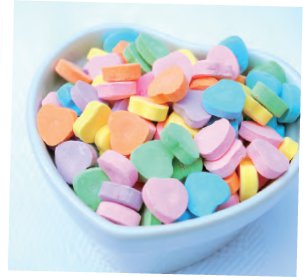
Before you graduate from my Prevention Is Hot cheerleading school, you really need to understand sugar at the physiological level. So let’s get this party started with a basic tutorial.
CARBS 101
There’s a lot of gabbing in the news about good carbs versus bad carbs—but what are they, exactly? First and foremost, carbohydrates are the starchy or sugary part of foods. When we think about sugar, naturally we imagine all things yummy and sweet. But in actuality, all carbs (including those that don’t taste sweet, like pasta, bread, and potatoes) break down into glucose—the sugar your body uses for fuel. From your body’s point of view, there’s not much difference between a spoonful of sugar and a slice of white bread.
Carbohydrates come in two varieties, complex (“good” or “unrefined”) and simple (“bad” or “refined”). Complex carbs such as whole grains, beans, and veggies are good for two reasons: First, they take longer to digest, therefore your blood sugar doesn’t spike. This means your energy levels stay on a more even keel—no sugar highs and no crashes. No frantic search for guns, no scraping your torn self (in fishnets) off the concrete. Second, complex carbs come with a lot of other good stuff, like vitamins, minerals, enzymes, protein, and fiber. They fill you up and leave you satisfied.
Simple carbs often started out as complex, but they have a tragic fall-from-grace story. We humans tinkered with them. Once we started, we couldn’t stop. In the process we refined, bleached, and blasted out all their goodness and starlight. What was once whole became a fake food in a deceptively perky package.
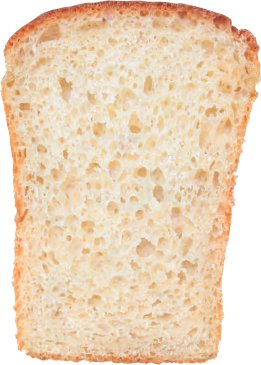
With the exception of fresh fruit, simple carbs are all the junky foods you already know are bad for you: white sugar, white flour, white bread, some whole wheat breads, cookies, sugary snack foods, candy, cake, muffins, crackers, chips, white pretzels, energy drinks, sodas and sweetened soft drinks, concentrated fruit juices, and all the other empty calorie fillers that today make up at least a third of the Standard American Diet.
Carbohydrates come in two varieties, complex (“good” or “unrefined”) and simple (“bad” or “refined”).
GLUCOSE
The fabulous Dr. Neal Barnard gives us a mini glucose lesson in chapter 4, but let’s look at it here as it relates to our sugar tutorial. When glucose enters your bloodstream, your pancreas releases insulin, the master hormone of metabolism. Insulin has lots of jobs, but most importantly it regulates glucose levels by shuttling it to cells to use as fuel. But if a cell has all the fuel it needs for the moment, insulin carries off the extra glucose to be stored as fat. So far, so good—because everyone needs a little cushion for the pushin’. However, a diet high in simple sugar and refined carbs dumps a ton of glucose into your blood very quickly. As a result, your pancreas is forced to barf out additional insulin, which isn’t good for you or your pancreas.
This is one vicious cycle. Over time you may develop insulin resistance, which makes your body less effective at regulating blood sugar. Insulin resistance also affects your ability to use stored fat as energy. In other words, you can’t lose weight as easily when there’s a bunch of insulin coursing through your body. But it’s not just about weight. Too much glucose and insulin is a major culprit in many diseases.

SUGAR AND CANCER
Now, I don’t want to vilify sugar (glucose) here, because it’s the fuel that feeds all our cells, healthy or unhealthy. Everything we eat gets broken down into glucose eventually—even fats and proteins if needed. In fact, without glucose we couldn’t survive. However, if you have cancer—in any form—it’s best to avoid all refined sugars and carbohydrates and cut back on high-glycemic fruits. Why? Read on, studious vixen!
One of the reasons cancer cells are so freaky is that they are extremely hungry. Their metabolism is much higher than that of healthy, normal cells. Yet cancer cells are totally inefficient. They have to work much harder and burn more glucose to produce the same amount of energy as healthy aerobic cells. It’s sorta like comparing a Prius (healthy cells) with a gas-guzzling SUV (cancer cells).
But cancer cells are crafty, too. To obtain the amount of fuel they need, cancer cells have around nineteen times more glucose receptors than normal cells. This allows them to come to the party first and suck up the fuel fast. One of the ways that cancer cells process their fuel is through fermentation, which converts sugar to energy without using oxygen. Remember our little pH lesson? Healthy cells love oxygen; cancer cells don’t. Their clunky anaerobic metabolism produces a lot less energy. So to stay alive, cancer cells need a bigger fuel supply. What’s the best way to get quick fuel? Sugars and carbs!
If you have any doubt about sugar and cancer, consider how a PET scan works. Patients are injected with a tiny amount of radioactive glucose (sugar). The test measures the parts of the body that absorb the most glucose. Greedy cancer cells light up like fireworks.
But it doesn’t stop there, and as you just learned, you can’t talk about glucose without mentioning insulin. As David Servan-Schreiber, MD, writes in his book, Anticancer: A New Way of Life, “The secretion of insulin is accompanied by another molecule, called IGF (Insulin-like Growth Factor), whose role is to stimulate cell growth. Furthermore, insulin and IGF have another effect in common: They promote the factors of inflammation that also stimulate cell growth and act as fertilizer for tumors.” Bottom line: Excess insulin in the body tells cancer cells to grow, baby, grow.
Need I say more? That’s all I need to know as a cancer patient. And though some well-respected experts disagree, I’m not taking any chances! Whether we’re talking normal cells or cancer cells, the cycle is the same: The more sugar you eat, the more acidic (anaerobic) you become, the more you tax your immune system, the more stress and inflammation you create, the more insulin and IGF circulate in your body—and thus the more opportunity for cancer cells to grow and divide.
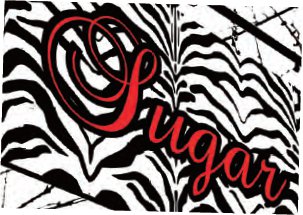
THE GLYCEMIC INDEX
How can you learn to make better choices when eating carbs and sugar? Enter the dazzling glycemic index (GI), a measure of how quickly and how high a particular carbohydrate raises your blood sugar level. GI is a numerical ranking system that compares a given food to a pure sugar, such as white sugar. Because white sugar is all carbohydrate, it’s designated 100 on a scale of 0 to 100. The GI is a measure of carbs only; fats and proteins have no effect on the score.
Foods with a high GI value are almost always refined, simple carbs. Conversely, foods with low GI values tend to be unrefined, complex carbs. The difference between high- and low-GI foods lies mostly in how much fiber they contain. Fiber slows the digestion of sugars and keeps you even and peaceful. That’s why a plant-based, low-GI diet is one of the central tenets of the Crazy Sexy lifestyle.
Familiarize yourself with the glycemic index—it’s a terrific tool. As a rule of thumb, any food that has a GI rank below 60 is a good choice, especially if you need to watch your blood sugar. In fact, people who stick to a low-GI diet are less likely to develop diabetes and other medical life lemons. And guess what? Not only can low GI diets prevent nasty diseases, they can also help to reverse them. Amen, glitter explosion!
I’ve listed the GI Index of many common foods. Keep in mind that the index measures grams of carbs, not grams of food. In other words, it doesn’t tell you how much you have to eat to get that gram. For example, a big bowl of beans might contain the same quantity of carbs as a small bowl of fruit. If you want to learn more, The GI Handbook by Barbara Ravage and The New Glucose Revolution by Jennie Brand-Miller and Kaye Foster-Powell are both great books for self-study.
GLYCEMIC INDEX VALUES OF SOME COMMON FOODS
| BEANS | GI VALUE (per gram of carb) |
| Black beans | 30 |
| Black-eyed peas | 42 |
| Chickpeas | 28 |
| Kidney beans | 28 |
| Lentils (red) | 26 |
| Lima beans | 32 |
| Mung beans | 39 |
| Soy beans | 18 |
| Split peas | 25 |
| FRUIT | GI VALUE |
| Apple | 38 |
| Apricot | 57 |
| Apricot (dried) | 30 |
| Banana | 52 |
| Blueberries | 53 |
| Cantaloupe | 65 |
| Cherries | 63 |
| Grapefruit | 25 |
| Grapes | 53 |
| Kiwi fruit | 53 |
| Mango | 51 |
| Orange | 42 |
| Papaya | 59 |
| Peach | 42 |
| Pear | 38 |
| Pineapple | 59 |
| Plum | 39 |
| Raisins | 64 |
| Strawberries | 40 |
| Watermelon | 76 |
| VEGETABLES | GI VALUE |
| Carrots | 47 |
| Corn | 48 |
| Green peas | 45 |
| Baked potato | 85 |
| Sweet potato | 59 |
note: Most vegetables are 0 on the GI index, including broccoli, cabbage, cauliflower, cucumber, green beans, chard, kale, lettuce and other salad greens, and spinach.
| GRAINS | GI VALUE |
| Barley | 25 |
| Buckwheat | 54 |
| Bulgur | 48 |
| Cornmeal | 68 |
| Millet | 71 |
| Quinoa | 53 |
| Rice (brown) | 48 |
| Rice (jasmine) | 109 |
| Rice (white) | 56 |
| Wild rice | 57 |
SOURCE: Jennie Brand-Miller and Kaye Foster-Powell, The New Glucose Revolution
ARTIFICIAL SWEETENERS
ARE NOT 
Only a few decades ago, plain old sugar was about the only game in town to satisfy a sweet tooth. But as Old Cane started to get a bad rap, the chemical companies began cranking out one artificial sweetener after another. Dr. Ginger Southall of the Hippocrates Health Institute emphatically states that the use of chemical sweeteners of any kind—aspartame, NutraSweet, Equal, Sweet’N Low, saccharin, Canderel, and even Splenda—is not advised, tootsie. “Artificial sweeteners are potent nerve toxins and never should have been approved as safe for human consumption. They have the potential to freak out and damage your nervous system—your brain and nerves—leading to a variety of symptoms from migraine headaches to unexplained seizures, dizziness, depression, and vision problems. They are even linked to cancer, obesity, and diabetes. I bet you didn’t realize how many of these human-made tasty toxins you gobble up on a daily basis. They hide out in thousands of your favorite foods, including diet meals, flavored waters, popular drink mixes such as Crystal Light, many commercial salad dressings, and—ready for this?—even overthe-counter medicines like Alka-Seltzer, toothpastes, gum, vitamins, and those Listerine breath strips! Even the stuff that ‘tastes like sugar because it’s made from sugar’ is highly processed and has been laced with chlorine.” Yum!
 TIP
TIP
Read the label for what the manufacturer says is a serving size. The label can claim a product is low in sugar, but the portion size might be unrealistically small—two tiny cookies, for instance, out of a pack of ten tiny cookies.
So what are the sweeteners of choice on the crazy sexy diet? Raw organic agave, yacón, and, even better, stevia are great choices. Pick them up at the local health food store or even at the good old standard supermarket.
CONTROLLING CRAVINGS
When I first started on my Crazy Sexy Diet, my cravings didn’t care one bit that I was trying to get healthy—my body was used to crap and wanted more. Before sundown I was an alkaline angel, but when night fell I’d hear that eerie spaghetti-western music in my head. You know, the tune that plays when the white-powder outlaw rides into town. I’d slam the door, roll the armoire in front of the windows, and grab my handy sawedoff shotgun.
Useless! The fudge brownies (à la mode) would find their way to my lips. Once down the hatch they created a wild (yet numbing) effect that made me want to move to a brothel! The only way for me to break the pattern was to acknowledge and then grin and bear the craving cyclone until it passed.
 TIP
TIP
Here are a few effective ways to ride the wave of the crave without falling into the ocean:
 Have a snack that’s high in protein and some fat, such as nuts, seeds, and avocado.
Have a snack that’s high in protein and some fat, such as nuts, seeds, and avocado.
 Sip a hot herbal tea with a bit of agave or stevia.
Sip a hot herbal tea with a bit of agave or stevia.
 Get a satisfying boost from a zesty lemonade made with a couple of freshly squeezed lemons, stevia, and mint (or strawberry).
Get a satisfying boost from a zesty lemonade made with a couple of freshly squeezed lemons, stevia, and mint (or strawberry).
 Juice up a nutrient-packed green drink or smoothie with some good fat in it, like coconut or avocado.
Juice up a nutrient-packed green drink or smoothie with some good fat in it, like coconut or avocado.
 Enjoy a rice cake with almond butter or a baked sweet potato.
Enjoy a rice cake with almond butter or a baked sweet potato.
 Go for a small piece (about 1 inch square) of dark chocolate—75 percent or higher cacao is best. Cacao rocks; carob, too. Savor them slowly.
Go for a small piece (about 1 inch square) of dark chocolate—75 percent or higher cacao is best. Cacao rocks; carob, too. Savor them slowly.
 Sip some almond milk with cocoa and stevia.
Sip some almond milk with cocoa and stevia.
 Snack on a cup full of lowglycemic fruit salad (pears, apples, blackberries).
Snack on a cup full of lowglycemic fruit salad (pears, apples, blackberries).
 Grab a piece of wood and bite hard like a Civil War amputee.
Grab a piece of wood and bite hard like a Civil War amputee.
 Floss, brush, and gargle with natural minty mouthwash. It sends the signal that the office of eating is temporarily closed for business.
Floss, brush, and gargle with natural minty mouthwash. It sends the signal that the office of eating is temporarily closed for business.
 Change your environment until the crisis passes. Go for a walk, call a friend, take a bubble bath, cuddle your pet, have hot sex!
Change your environment until the crisis passes. Go for a walk, call a friend, take a bubble bath, cuddle your pet, have hot sex!
SNEAKY SUGAR
Think those cookies sweetened with concentrated fruit juice instead of white sugar are somehow “healthier”? Isn’t brown sugar better than white? Nope. Sugar is sugar, no matter what alias it hides under. Ditto for labels that claim “no sugar added” or “contains only natural sugars.” Those are often weasel words used to trick you. If you spot any of these words on the ingredients list, the product contains sugar:
Brown sugar
Corn sweetener
Corn syrup
Corn syrup solids
Dextrose
Fructose
Fruit juice concentrate
Glucose
High-fructose corn syrup (HFCS)
Honey
Invert sugar
Lactose
Maltose
Malt
Malt syrup
Maple sugar
Maple syrup
Molasses
Raw sugar
Sucrose (table sugar)
Sweetened carob powder
Turbinado
INFLAMMATION with

Lilli B. Link, MD, is a boardcertified internist currently practicing as a nutritional counselor in New York City. She specializes in raw foods and integrative nutrition. Visit her at www.llinkmd.com.
GLUTEN-FREE LIVING
While we’re talking about sugar, carbs, and inflammation, let’s talk about a major health issue that is often overlooked: gluten intolerance. It’s a pain-in-the-ass condition that could easily be affecting you. In fact, if you’ve tried everything, been tested for everything, changed your diet significantly, and still feel lousy, then avoiding gluten might be the missing link to your vibrant health. Sensitivity to gluten—a protein found in wheat, rye, and barley—could be the culprit behind digestive problems like bloating, cramps, diarrhea, fatigue, achy joints, and even skin rashes. People who are more than just mildly sensitive to gluten have these symptoms big time. They have celiac disease, which can cause severe damage to the small intestine and serious nutrition issues.
Remember what Dr. Link just taught us about what happens in our bodies when we eat inflammatory foods? Well, an allergy to gluten is similar. It’s like having an inner injury created by a foreign invader. What happens next? Your awesome body goes into whoop-ass mode to destroy the bad guy (gluten). Unfortunately, this heroic gesture only causes more inflammation. Ugh, I’m exhausted.
A surprisingly large number of people are sensitive to gluten and experience some or all of the symptoms whenever they eat wheat and the other grains. But since most people don’t know about the effects of gluten sensitivity, they chalk their symptoms up to other problems such as irritable bowel syndrome or even depression and then pop medications that don’t really help, when all they really need to do is change their diet.
Celiac disease used to be thought of as a rare childhood phenomenon. It turns out that it’s much more common and doesn’t always start in childhood. More than two million people in the United States have celiac disease—that’s 1 in every 133 people, and the number could actually be as high as 1 in every 100 people. According to researchers at the Mayo Clinic, for every person diagnosed with celiac disease, it’s possible that there are as many as thirty more who have it but haven’t been diagnosed. They say celiac disease is four times more common now in the US than it was in the 1950s.
There’s a simple way to know if gluten is not your friend: Stop eating it and see how you feel. It’s amazing how chronic problems, like fatigue, bloating, gas, and diarrhea, clear up when you kick out the gluten.
GLUTEN INTOLERANCE
symptoms
Gluten intolerance or celiac disease could be the culprit lurking behind any of these symptoms:
Diarrhea, especially if it happens often for no apparent reason
Abdominal pain
Bloating and gas
Foul-smelling poop
Anemia
Depression
Irritability
Joint pain
Mouth sores
Muscle cramps
Skin rash
Osteoporosis
Neuropathy (tingling or pain in the legs and feet)
The only treatment for gluten intolerance or celiac disease is a gluten-free diet. Gluten is found in every single form of wheat. That includes durum (the kind used for flour), semolina (the kind used for pasta), spelt, kamut, einkorn, farro, and other forms of wheat, such as wheat germ and bulgur. Gluten is also found in grains related to wheat: rye, barley, and triticale (a cross between wheat and rye). If you have celiac disease, you have to completely eliminate these grains from your diet and your life.
If you’re sensitive to gluten but don’t have celiac disease, it’s possible that you can eat small amounts of gluten-containing grains. The degree of gluten sensitivity varies from person to person. Wheat has the most gluten, so you probably want to stay away from it completely, but you might be able to have small amounts of rye and barley.
Avoiding gluten completely isn’t easy. It means never eating wheat bread, pasta, cereal, and almost all processed foods. That’s because processed foods often have hidden gluten in the form of food additives, preservatives, and stabilizers. Frozen french fries, for instance, often have added gluten. There’s even gluten in lipstick.
Life without pasta? No way! Just choose glutenfree brands—there are lots of delish kinds to select from. You can also eat grains, such as brown rice, wild rice, amaranth, corn, buckwheat, millet, teff, and quinoa. Some people can eat oats without any problems, although others may have to skip them because oats are often processed in the same plants where wheat is processed, and cross-contamination may occur. Check out glutenfreeoats.com for more information. Instead of wheat flour, you can use gluten-free flours made from a variety of grains, legumes, nuts, and seeds. In fact, many supermarkets today have a good selection of gluten-free breads and other products, and it’s amazing what great gluten-free stuff you can get online. And don’t forget that fruits, veggies, leafies, beans, potatoes, squashes, seeds, and nuts don’t have gluten, so you have tons of great options.
GO GLUTEN-FREE with
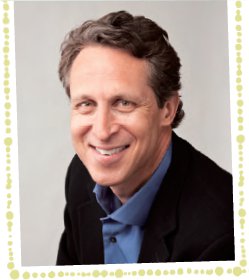
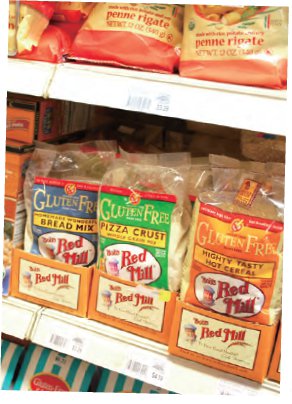
Mark Hyman, MD, author of the best-selling The UltraMind Solution and other books, is a practicing physician and a pioneer in the emerging field of functional medicine, which strives to use new research to understand and treat the underlying causes of disease.
SOCIAL LUBRICANTS AND JAVA
Now for the liquid lovers. And who doesn’t love a cup o’ Joe and a glass of red? Enjoy them from time to time; just don’t make them an everyday habit. Like sugar, these mischievous Casanovas are highly addictive. Once you dip your toe in, they’ve got ya. Your adrenals, kidneys, skin, breath, cholesterol, blood, and blood pressure will thank you when you dial down your consumption.
Coffee is extremely acidic and causes considerable dehydration. Remember that minerals are required to balance pH. Kiss these minerals good-bye as you piss them down the toilet along with your hot cup of Starbucks. Those who advocate regular moderate use claim that coffee contains beneficial properties. Maybe so, but that doesn’t take into account the whole picture. We can’t dissect the good from the bad in order to make the case for our health choices.
In addition to being acidic, coffee beans are roasted. These beans have oils in them. Roasted oils become rancid and clog up your lovely liver. It’s kinda obvious that this stuff isn’t good for you. The fact that you get the jitters when you drink it, and migraines when you don’t, should tell you something. How about insomnia? Coffee is definitely the enemy of restful sleep. And if you’re dealing with anxiety, panic disorders, or a really stressful job, coffee will only exacerbate the chaos. If a cold sweat really turns you on, then by all means, drink up.

For those gals looking to start a family, a 2008 study in the American Journal of Obstetrics and Gynecology found that mamas who guzzled high doses of caffeine during pregnancy (around 200 milligrams or more per day, or two cups of brewed coffee) had a greater risk of miscarriage than those who drank less caffeine; the more caffeine the women drank over 200 mg, the greater their risk of miscarriage. Think about it: Who wants to live in a house that’s dirty and stressful? The baby’s immature metabolism hits the roof while your coffee break strangles the blood flow to the placenta. And that includes sodas with caffeine, energy drinks, and black tea.
Women who are prone to breast cysts will also want to stay away from coffee and other highly caffeinated drinks. See your gynecologist if you ever feel even the slightest lump. If it turns out to be a benign cyst, you may want to check out evening primrose and vitamin E. (I myself take about 1,000 mg of evening primrose and 400 to 800 IUs of vitamin E.) This helps tremendously; within a few weeks the cysts will likely disappear.
GETTING OFF THE JOE
Getting off coffee isn’t all that hard, but don’t do it cold tofurkey. If you’re a heavy caffeine consumer, dumping it suddenly might make you a homicidal zombie. Wean yourself slowly over a week or so.
• MAKE—AND DOWN—A GREEN JUICE! The more juice you drink, the fewer outside stimulants you’ll need. Green juice, a mixture of glorious green veggies and herbs, is loaded with a hefty blast of sustainable energy.
• HAVE A CUPPA GREEN TEA, white tea, or yerba maté. The relatively small amount of caffeine in these drinks will definitely help you transition. Bancha and genmaicha teas both have a very earthy taste and are made from older green tea leaves picked at the end of the season. Kukicha, made from the twigs, stalks, and stems of the tea plant, contains the tiniest amount of caffeine. Kukicha tea has a slightly alkalizing effect and is good for bellyaches.
• TRY CACAO (RAW CHOCOLATE), the coffee alternative that will knock your socks off. It contains only trace amounts of caffeine. I love making a superfood smoothie out of cacao, nut milk, stevia or agave, and vanilla—add a few goji berries and a banana. Or try making a delish hot chocolate by heating some hemp milk and adding a scoop of cacao and a dash of agave!
• BREW UP SOME TEECCINO with almond or hemp milk and a drizzle of agave for an amazing cup of herbal coffee. Teeccino is made from grains and doesn’t contain any caffeine. It does have a wee bit of gluten in it, so if you’re sensitive you may want to avoid it.
• SAMPLE CHICORY, a totally natural product made from a perennial plant. It’s completely caffeine-free and can be brewed right in your home coffeemaker (after you give it a good washin’). Use 2 to 3 tablespoons of ground roast chicory for each cup of brew desired. Vary the amount to suit your taste. Sweeten with hemp or almond milk and a drop of stevia.
• IF THERE’S NO WAY IN HELL YOU’LL TRY ANY OF THESE alternatives, then at the very least choose organic, shade-grown coffee and cut back to no more than one cup per day. Remember, flirt—don’t marry! Some folks do the half-caf, half-decaf thing, or transition to decaf. Find companies that use a water process to strip the caffeine. Most store decaf brands use toxic chemicals that often remain in the brew. And buy the best you can afford—if you’re going to drink coffee, it might as well taste good.
BUT JESUS DRANK WINE!
Guess what? You ain’t Jesus. Now, I’m not saying you have to haul your ass to AA and sober up ASAP; breaking (gluten-free) bread and sipping vino is a lovely thing. Let’s just make sure we’re keeping it in a healthy range. Like coffee, alcohol is very acidic. Even when consumed in moderation, alcohol interferes with your ability to absorb nutrients. So let’s define moderation: That’s one drink daily for women, and no more than two drinks a day for men. What’s a drink? One 12-ounce serving of beer, or one 5-ounce glass of wine, or 1.5 ounces of 80-proof distilled spirits. I bet some of y’all thought moderate was a 7-Eleven Big Gulp with a phat blast of Jack. Nope!
More than two drinks a day increases your risk of liver disease, high blood pressure, and cancer. For women, the risk of breast cancer goes up the more you drink—women who regularly have more than two drinks a day are at higher risk than women who drink less or don’t drink at all. Since alcohol creates blood sugar spikes, people with diabetes need to be particularly careful—their levels can peak and plummet into a dangerously hypoglycemic range.
If you’re trying to lose weight, alcohol will sabotage your plans. Drinking too much booze messes with your ability to know if you’re full. Since alcohol contains tons of empty calories, overdoing the sauce will make you look like a bloated hag. Excess booze also damages your cute little intestinal villi and reduces the absorption of nutrients—especially folate, vitamin B12, and calcium. Though some studies suggest that moderate amounts of red wine (one glass daily) have health benefits, especially to the heart, these perks can be obtained in other ways that are far less risky. Fresh-squeezed Concord grape juice, anyone?
The problem for most overworked folks is that alcohol can easily become the go-to chill outlet. I sure as heck love my Zinfandel unwind. But I’ll also admit that sometimes I find reasons to drink or look forward to drinking. When alcohol (or drugs) are your primary tool for stress reduction or coping in public situations (aka social lubricant), it’s time to assess the situation. An occasional spirit might just be the thing you need to lift your spirits—but occasional doesn’t mean every day.
If you turn into someone else when you suck it back—big red flag. I once dated a dude who had a history of alcohol abuse in his family. Though he didn’t drink on a regular basis, he still had a drinking problem, because when he did get lit, he changed. One night he changed too much, but that’s a story for another book.

It’s scary to put our acidic vices (sugar, booze, coffee, pills) on the back burner for a while. But there’s no need to stress out over the idea that this is “forever.” The clean, real you is “for now” and if she feels good, then visit her often. You won’t turn into a boring wallflower if you clean up your nightclub act. Listen to your body and ease up. If you perceive this way of eating and living as deprivation, then your cravings will skyrocket. That’s why it’s important to address all the stinkin’ thinkin’ in our hearts and heads as we clean up our terrain.
Plan your blow-its. Mini splurges in small proportions won’t tip the health cart over completely. You can still meet your friends for a latte or a glass of organic wine (invite me!). As long as you stay in the 60/40 to 80/20 ranges, the majority of the time, your body will get the boost it needs to shine on, you Crazy Sexy diamond.
 testimonial: Lauren L.
testimonial: Lauren L.
I have Crohn’s disease and have been on medications for four years. I had been eating well for over a year but was still on prednisone and unhappy about it. Then I found Kris. I jumped right into her Crazy Sexy Diet! When I started her program I was feeling sick, tired, and just plain terrible from the high dose of prednisone. Who would have known that in just twenty-plus days I would be off the prednisone and feeling better than ever? Cutting gluten out of my diet, juicing, green smoothies, and eating mostly raw foods have helped me to feel incredible. While I am not cured yet, I still have hope and I know that with this diet, being cured is within reach. The CSD has brought my clarity to a new level. I have more energy than I’ve had in a long time and I am full of light.
CHAPTER  IN REVIEW
IN REVIEW
REMEMBER:
 Get the sugar out—too much (and not even that much) of this habitforming substance wreaks havoc on your blood sugar levels, mood, and weight. That goes for the artificial stuff, too.
Get the sugar out—too much (and not even that much) of this habitforming substance wreaks havoc on your blood sugar levels, mood, and weight. That goes for the artificial stuff, too.
 Simple carbs like white bread and pasta, pastries, and potatoes are basically sugar in disguise.
Simple carbs like white bread and pasta, pastries, and potatoes are basically sugar in disguise.
 Choose most of your food from the low end of the glycemic index scale.
Choose most of your food from the low end of the glycemic index scale.
 Consider going gluten-free for a while to see if you feel better—if you do, can the wheat products.
Consider going gluten-free for a while to see if you feel better—if you do, can the wheat products.
 Buzz off—cut down on or eliminate caffeine and alcohol.
Buzz off—cut down on or eliminate caffeine and alcohol.
